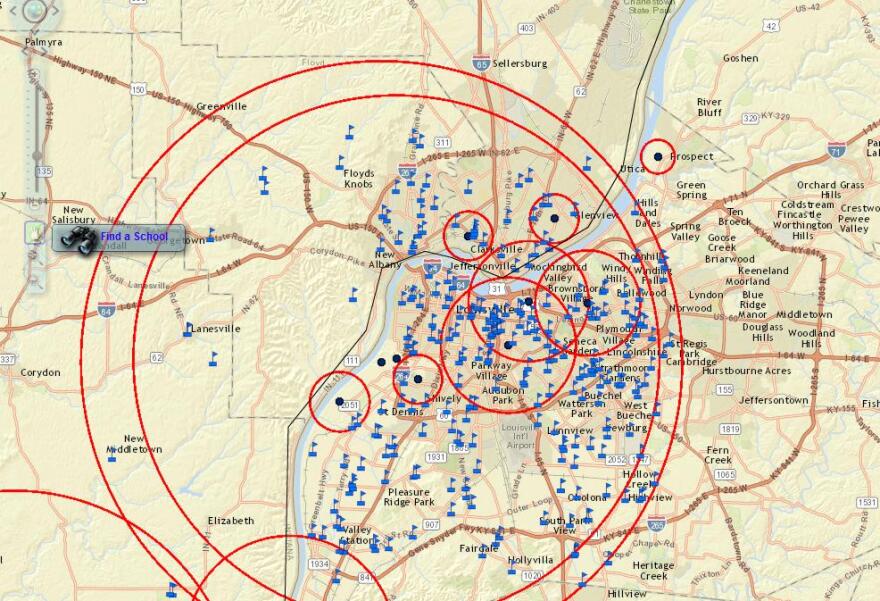An analysis by a non-profit of the locations of schools and chemical danger zones nationwide has found that one-third of U.S. students are vulnerable to chemical disasters. In Louisville, nearly every school inside the Watterson Expressway and in the Southern and Southwestern parts of the city is in at least one danger zone.Check out the map here.The reportfrom the Center for Effective Government analyzed the data from December, 2013 that the federal Environmental Protection Agency collected as part of its Risk Management Program. Around the country, facilities that use or store certain toxic chemicals are required to report that, as well as estimate a radius that could be affected in case of an accident.In Louisville, the danger zones for Lubrizol and DuPont facilities in Rubbertown cover large chunks of the city—14 miles and 16 miles, respectively—and include more than 200 schools. Those companies use chemicals like vinyl chloride, chlorine and hydrogen fluoride, which are listed because they’re either toxic or flammable. But there are other, smaller zones which also encompass many local schools; they’re formed around the J.B. Swift Plant (which uses anhydrous ammonia), the local water treatment plants (which use chlorine and anhydrous ammonia) and other smaller facilities.Two Louisville schools--Louisville Collegiate School and the Kentucky School for the Blind--are in the most known danger zones in the state. Both are in five overlapping zones.In Kentucky,five counties (McCracken, Boyd, Henderson, Greenup and Marshall) have such large danger zones that every student in these counties could be at risk in case of a spill.The Courier-Journal also mapped these danger zones in Louisville earlier this year; the report is worth checking out.The existence of these chemicals at plants in Kentucky doesn’t mean a leak or accident is imminent or likely. But it is possible, and the report urges companies to begin to move toward less hazardous chemical alternatives. There’s also the possibility of changing manufacturing processes to reduce the amount of a particular chemical that has to be stored on site, or mixing chemicals to reduce volatility.
Report: Many Louisville Students Attend Schools in Chemical 'Danger Zones'


